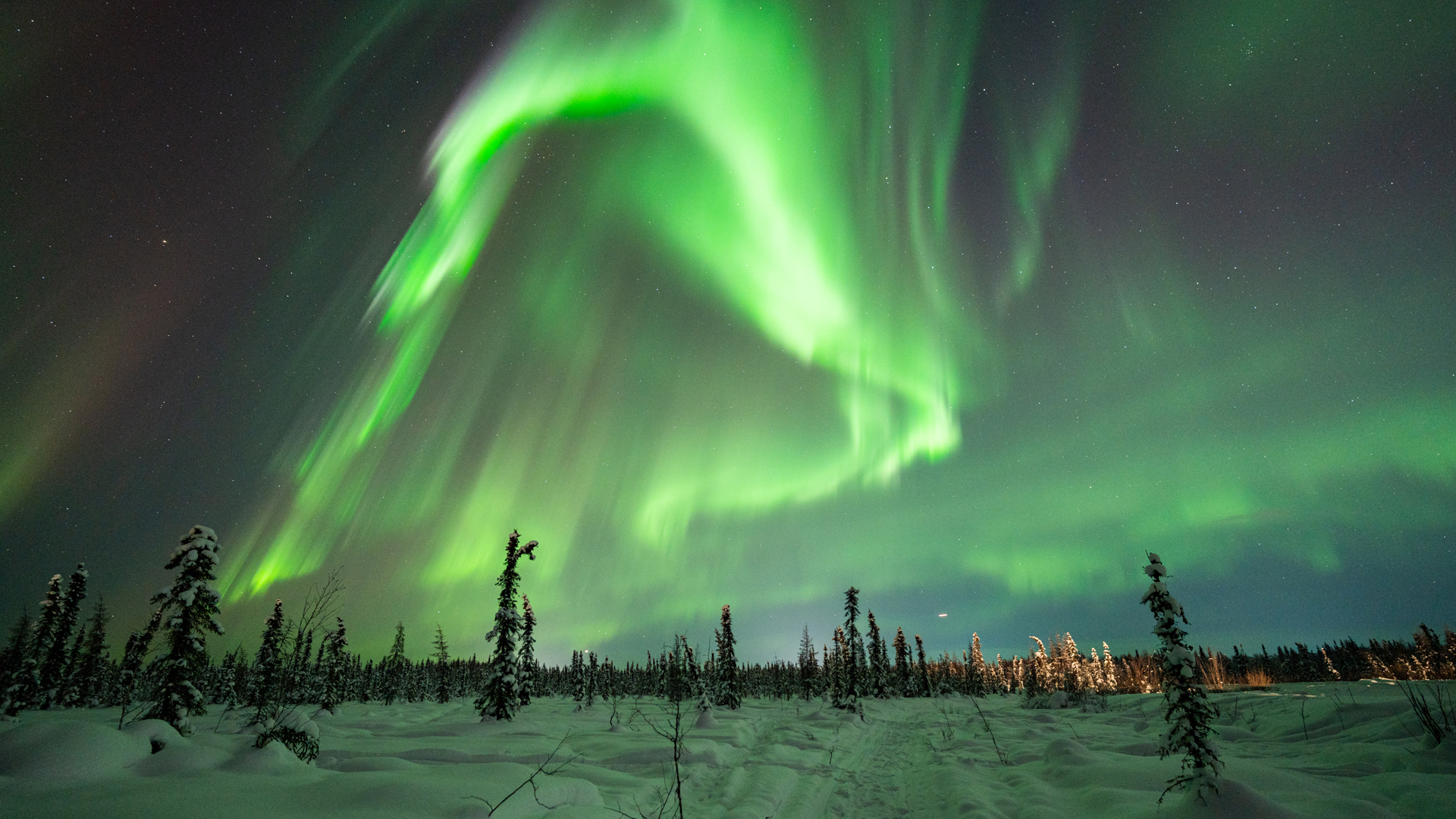Supercharged Valentine's Day auroras give Alaska-based polar lights chaser the night of his life (photos)
"Everything about tonight was insane."

A well-timed plasma eruption from the sun delivered a Valentine Day's night of auroral splendor for skywatchers in Alaska, with the display's intensity taking by surprise even seasoned aurora chasers.
Vincent Ledvina is no stranger to the sight of glimmering polar lights. The space physics PhD student took his first aurora picture at the age of 16. Since then, he says on his website, he's been hooked on the thrill of aurora chasing. This passion eventually led to him relocating from Minnesota to Fairbanks, Alaska, to study aurora physics. Alaska, the northernmost U.S. state, straddles the polar circle, offering the nation's best conditions for aurora viewing. And Ledvina has been making the most of it.
His Twitter account and his website's photo gallery are overflowing with stunning aurora pictures. Yet, in a series of tweets as excited as the particles in the atmosphere over Ledvina's head, the photographer admitted that the auroras he saw on Valentine's Day this year were out of the ordinary.
Related: Where to see the northern lights: 2023 aurora borealis guide
"Everything about tonight was insane," Ledvina said in a tweet shared as his Valentine Day's night of aurora viewing drew to a close. "One of the best nights of aurora of my life, maybe the best. We had substorm after substorm, it never let up."
Everything about tonight was insane. One of the best nights of aurora of my life, maybe the best. We had substorm after substorm, it never let up.@TamithaSkov #aurora #northernlights pic.twitter.com/hVwmrCMVfWFebruary 15, 2023
In another tweet, he called the experience "straight up magic." Accompanied by an image of a shimmering ribbon of green and purplish glow suspended above the wintery landscape, he confessed that in all his years of aurora chasing, he had never seen such intense shades of red in an aurora.
In an email interview, Ledvina later explained to Space.com that red colors only appear in auroras when the density of solar wind particles in Earth's atmosphere reaches exceptionally high levels.
Breaking space news, the latest updates on rocket launches, skywatching events and more!
"Because the solar wind density was very high, the reds were spectacular," Ledvina wrote. "I have noticed the red colors are correlated with high density values. Also, usually, the aurora will "pop" (explode, dance, substorm are all similar terms) only once a night and then subside and evolve into a pulsating aurora, which is a sort of recovery mode. Last night, the auroras popped over and over, which was awesome since just when I thought the show was over, I'd see more aurora coming in from the eastern and western horizons."
The most intense red color I’ve seen pic.twitter.com/Sjqb4NubXzFebruary 15, 2023
To get the feel of the night, just head to Ledvina's Twitter page.
"That was freaking incredible. INSANE substorm. The whole sky is glowing, so cool, no other words. Wow!!!!" Ledvina said in yet another post.
Aurora chasing is not for the faint-hearted. To take the stunning photographs, Ledvina had to brave temperatures as cold as minus 15 degrees Fahrenheit (minus 26 degrees Celsius).
He observed the spectacle from a remote patch of permanently frozen land about 15 miles away from Fairbanks until 2 a.m. when his camera batteries drained. But even after leaving the spot, he confessed he kept watching the dancing lights for another two hours.
To take aurora photographs, Ledvina uses a Sony mirrorless camera a7 IV, and a wide-angle, wide-aperture lens "to let in as much light as possible."
"I also have my iPhone 14 which can do a pretty good job at capturing the aurora when it's bright enough," Ledvina wrote. "On the Sony, I was shooting timelapses, so the images here are just frames picked out from sequences of 800 (or so) photos."
That was freaking incredible. INSANE substorm. The whole sky is glowing, so cool, no other words. Wow!!!! 😭😭 pic.twitter.com/au0jBODY6kFebruary 15, 2023

The burst of magnetized plasma, also known as a coronal mass ejection (CME), that delivered the magical night erupted from the sun on Saturday (Feb. 11) together with a powerful X-class solar flare. The X-flare, the most powerful type of solar radiation burst, briefly affected Earth immediately after it occurred, causing a temporary disruption to radio communications in South America. The CME particles travel through space at a much slower speed and therefore required nearly three days to arrive at our planet.
Follow Tereza Pultarova on Twitter @TerezaPultarova. Follow us on Twitter @Spacedotcom and on Facebook.

Tereza is a London-based science and technology journalist, aspiring fiction writer and amateur gymnast. She worked as a reporter at the Engineering and Technology magazine, freelanced for a range of publications including Live Science, Space.com, Professional Engineering, Via Satellite and Space News and served as a maternity cover science editor at the European Space Agency.
